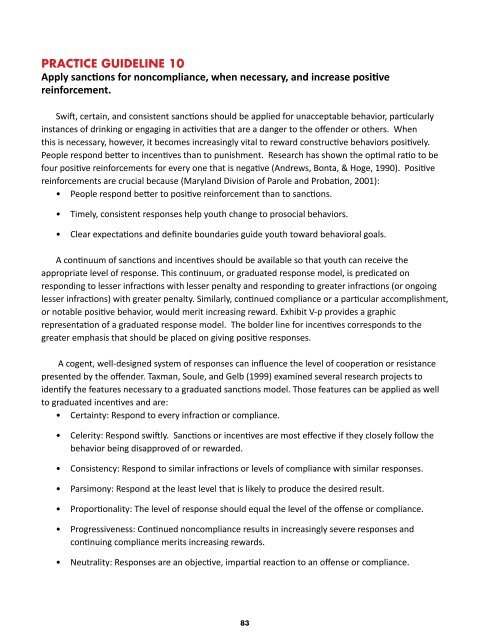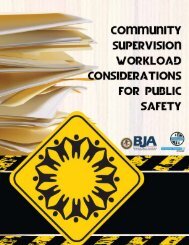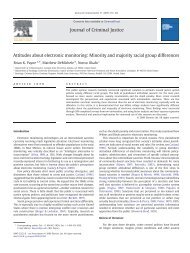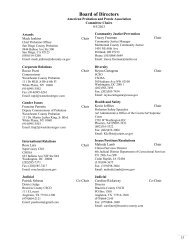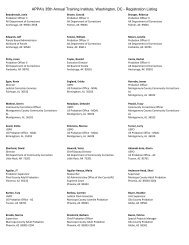Intervention Principles and Practice Guidelines for - Underage ...
Intervention Principles and Practice Guidelines for - Underage ...
Intervention Principles and Practice Guidelines for - Underage ...
You also want an ePaper? Increase the reach of your titles
YUMPU automatically turns print PDFs into web optimized ePapers that Google loves.
<strong>Practice</strong> Guideline 10<br />
Apply sanctions <strong>for</strong> noncompliance, when necessary, <strong>and</strong> increase positive<br />
rein<strong>for</strong>cement.<br />
Swift, certain, <strong>and</strong> consistent sanctions should be applied <strong>for</strong> unacceptable behavior, particularly<br />
instances of drinking or engaging in activities that are a danger to the offender or others. When<br />
this is necessary, however, it becomes increasingly vital to reward constructive behaviors positively.<br />
People respond better to incentives than to punishment. Research has shown the optimal ratio to be<br />
four positive rein<strong>for</strong>cements <strong>for</strong> every one that is negative (Andrews, Bonta, & Hoge, 1990). Positive<br />
rein<strong>for</strong>cements are crucial because (Maryl<strong>and</strong> Division of Parole <strong>and</strong> Probation, 2001):<br />
• People respond better to positive rein<strong>for</strong>cement than to sanctions.<br />
• Timely, consistent responses help youth change to prosocial behaviors.<br />
• Clear expectations <strong>and</strong> definite boundaries guide youth toward behavioral goals.<br />
A continuum of sanctions <strong>and</strong> incentives should be available so that youth can receive the<br />
appropriate level of response. This continuum, or graduated response model, is predicated on<br />
responding to lesser infractions with lesser penalty <strong>and</strong> responding to greater infractions (or ongoing<br />
lesser infractions) with greater penalty. Similarly, continued compliance or a particular accomplishment,<br />
or notable positive behavior, would merit increasing reward. Exhibit V-p provides a graphic<br />
representation of a graduated response model. The bolder line <strong>for</strong> incentives corresponds to the<br />
greater emphasis that should be placed on giving positive responses.<br />
A cogent, well-designed system of responses can influence the level of cooperation or resistance<br />
presented by the offender. Taxman, Soule, <strong>and</strong> Gelb (1999) examined several research projects to<br />
identify the features necessary to a graduated sanctions model. Those features can be applied as well<br />
to graduated incentives <strong>and</strong> are:<br />
• Certainty: Respond to every infraction or compliance.<br />
• Celerity: Respond swiftly. Sanctions or incentives are most effective if they closely follow the<br />
behavior being disapproved of or rewarded.<br />
• Consistency: Respond to similar infractions or levels of compliance with similar responses.<br />
• Parsimony: Respond at the least level that is likely to produce the desired result.<br />
• Proportionality: The level of response should equal the level of the offense or compliance.<br />
• Progressiveness: Continued noncompliance results in increasingly severe responses <strong>and</strong><br />
continuing compliance merits increasing rewards.<br />
• Neutrality: Responses are an objective, impartial reaction to an offense or compliance.<br />
83


